click the – or + signs to hide or show text. use the hovering left and right arrows to advance slides or use the play button on the bottom left side for a slideshow of the work in the exhibition
Marked: 1st Drawing Annual – Group Show
March 2014
Participating Artists
Santiago Galeas

In this series I explored the reoccurring ideas of memory, anonymity and mortality that often drive my intent through a series of 15 portraits of found obituary photos, titled “Obituary.” The portraits are done in conté, charcoal, and chalk, on paper towels. The purpose behind the materials reflects the concept of the drawings, as paper towels are essentially an ephemeral material. I’m not concerned with the archival quality of the piece, as its impermanence is the message. These particular portraits have been picked randomly from an online obituary website. I don’t know anything about the people pictured, so they are essentially anonymous, which is a big part of my body of work: the irony of the anonymity of a person and the general public interest in anonymous portraiture. Using only their faces as clues to the context of their lives gives a message as to what it means when people have left us and begin to exist as an archive. It is a representation of what is to come for the viewer. I want the viewer to be conscious of our temporal nature
http://www.santiagogaleas.com/
Polina Novozhenets

My artwork is an attempt to articulate how the mind functions in and between states of extreme calm and severe agitation. I rely on my own experiences coping with obsessive-compulsive tendencies and intrusive thoughts to inform my work. In an anxious state, my hand takes instruction directly from the glitch in my brain, bypassing the substance of my thoughts and observations in order to illustrate the labyrinthine chaos in my mind. As I continue take artistic direction from this place in my brain, I am compelled to explore drawing as both method and medium. Obsessive fixation is laborious, elaborate, and repetitive and the act of drawing these large intricate works translates this experience into images that not only posit a visual interpretation but also reflect the nature of their creation. Polina is an emerging, self-taught artist with a particular interest in mapping the contours of her own mind and identity. She was born in Belarus but grew up in New York State, then relocated to Austin, Texas, where she now lives. She works in many different media, shifting among drawing, painting, paper sculpture, metals, fibers, and digital art. This is her first public exhibition. You can see more of Polina’s work at her website:
www.polinanovozhenets.com
Erin McGee Ferrell
Born and raised in Kentucky, my core is bluegrass and colored quilts. I am culturally Nigerian though Irish in race. Educated in Massachusetts, I am a classically trained artist with a liberal arts foundation. Years of painting in Philadelphia awakened my love for architectural subjects. Now I paint on the wharfs of Portland, Maine, surrounded by water and big sky. These works depict the geometry of architecture such as fire escapes and ship masts. The subjects describe to the viewer how architecture and landscape merge. Forms on the water such as bridges and old pilings become valid landscape shifts. I focus on the negative space surrounding the architectural objects. The air with in the geometric shapes of ships’ rigging and bridge trusses. My goal is to challenge the viewer to reverse the negative space to positive shape. The air that surrounds the shape becomes the solid. That which seems invisible provides the structure.
http://www.Philadelphia-Artist.com
Cynthia Grilli
Cynthia Grilli is a contemporary painter who creates radiant works based on the human form. Using large, textured brush strokes and patches of expressive color, she establishes that paint can have as significant an impact as the subject. Although her primary medium is oil, she often does sketches and studies in charcoal. The looseness that comes from that practice is clearly translated back to her paintings, as her figures retain a free and effortless quality. The freedom which embodies the physical aspect of Grilli’s work also plays a key role in the conceptualization of each piece. As her style has solidified in recent years, her approach has become more responsive and emotional.
http://www.cynthiagrilli.com
Heidi Hogden
This body of work consists of a series of graphite drawings on paper that investigate the area around my childhood home in the township of Franklin, Wisconsin. Each work presents a unique interpretation of the land. My subjects range from the intimacy of a small fawn to broader landscape scenes of life-size animals and humans. The imagery for my drawings are inspired by direct observational experience, memory, and photographic source material (including images from digital motion cameras used for hunting). I use a monochromatic palate derived from a combination of powdered graphite and mechanical pencil on paper to render and evoke a particular emotion. Through the process of drawing, I revisit the landscape of my childhood as it was, as it is and as I imagine it to be.
http://www.heidihogden.com
Emanuela Harris-Sintamarian
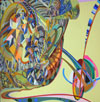
While a name is a cosmic prison, identity is its guardian. As a Romanian immigrant to the United States, I live in and between two diametrically opposed cultures; from a totalitarian regime to a society in which individuality and information are emphasized. I often dwell upon the relationship of my identity to my displacement, and the ways I have devised to reconcile these incongruous elements. To translate this dilemma formally, my current body of work tackles the dichotomy between containment and liberation by infusing a static diagram with a charge that propels it into motion.
The elements I incorporate in my visual lexicon are either borrowed directly or paraphrased from several disparate arenas including Eastern European folklore, architecture, and topography. Collectively these references create complex and fractured allegorical “maps” of my physical, emotional and intellectual journey. I regard these maps as a means to explore loss itself as a form of identity, an identity that transforms the schema of containment into ritualized forms of self-expropriation.
www.emahsin.com
Steve Sangapore
My work is an abstract rendition of themes and subject matter relating to sentient observation through experience, personal truth and unconscious relations in the context of a profound inward focus. Some visual themes found throughout my body of work include the cosmos, color scheme, scale, and the use of personal and impersonal symbolism through geometric and organic forms. Like phrases in music, my work’s leitmotif and creative spirit will forever remain a watermark in the web of our never ending, dynamic, conscious manifestation that is existence itself.
http://www.sangapore.com
Yangbin Park

When I read a biology book, be it about human DNA or history of evolution, I find the way authors describe micro particles that compose a unit fascinating. It is quite synonymous with the way our world is laid out – when we zoom out- cars, people, and even buildings look like abstract dots.
I began to re-imagine the microscopic perspective in a way that connotes an abstract space, relating this idea of mark-making to constructing a place and space, internal and external. Yangbin Park was born in Seoul, Korea. After fulfilling his term of mandatory service in the South Korean military, Park relocated to the United States to continue his studies at School of the Art Institute of Chicago (BFA) and Tyler School of Art (MFA). Yangbin has been included in various exhibitions in Korea and abroad such venues as Woodmere Museum of Art in Philadelphia, Momenta Art in New York, NEIU Fine Art Gallery Center in Chicago, Bradbury Gallery in Arizona, and Gana Art Center in Korea.
http://www.yangbinpark.com
Ren Adams

My primary body of work investigates the nature of emergence in the data cascade—addressing the way being materializes from non-being, matter from the void of non-matter, in relation to time-relativity and fluid perspective. Extending into the hypertext of time and geographic space, I address information as matter, the interconnectivity of networks (biological, social, spatial) and the deep virtual space where it all takes shape. Synthesizing ideas found in physics, information theory, Eastern philosophy, archaeology and digital culture, I embrace the interdisciplinary nature of mixed media, layering printmaking techniques with drawing, painting and digital processing. These layers address convergence, the originating space where substance takes root, generating a virtual archaeological dig where viewers uncover artifacts, moments and mysterious terrain. The resulting alchemy of image integrates micro and macro components, revealing transitory connections while expressing multiple points in time simultaneously.
http://www.renadamsart.com/cv.html

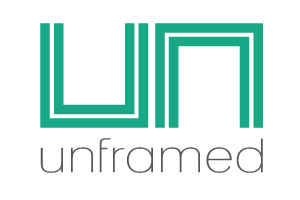



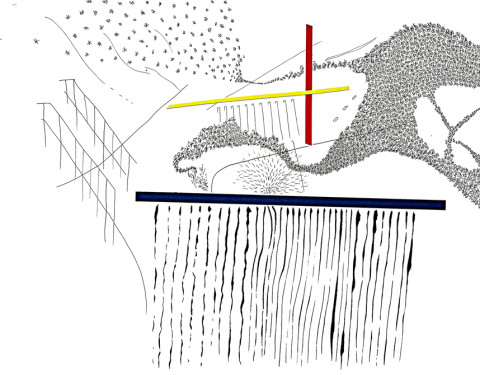
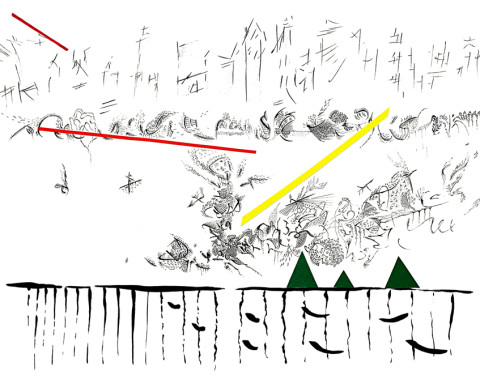
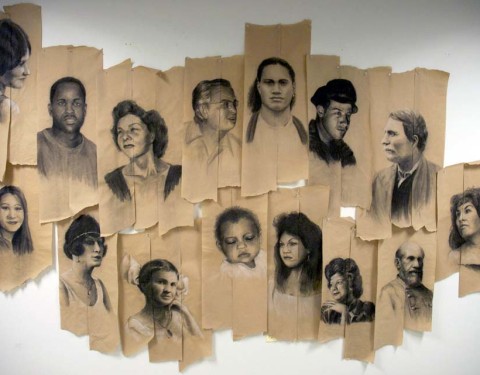
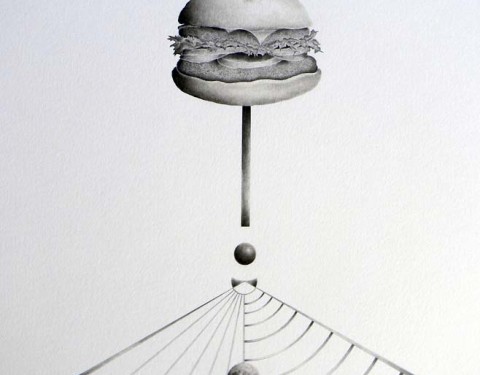
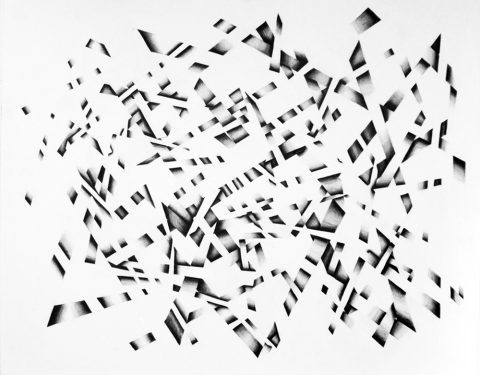
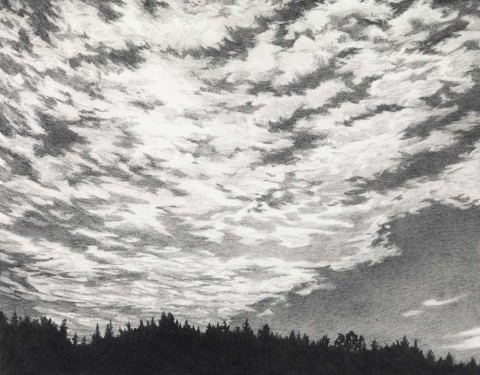
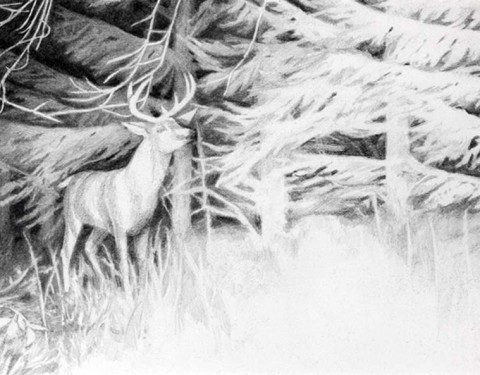
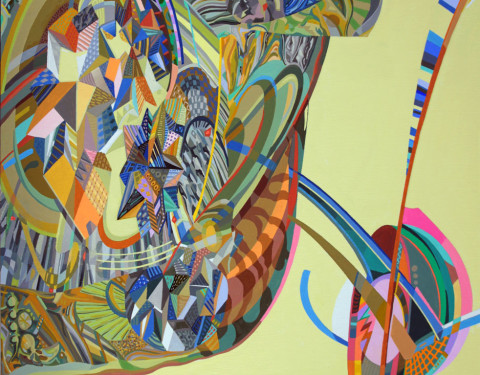
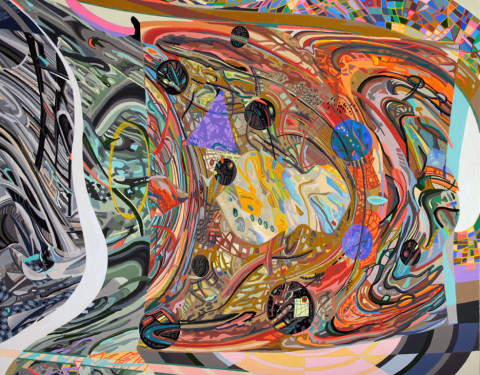
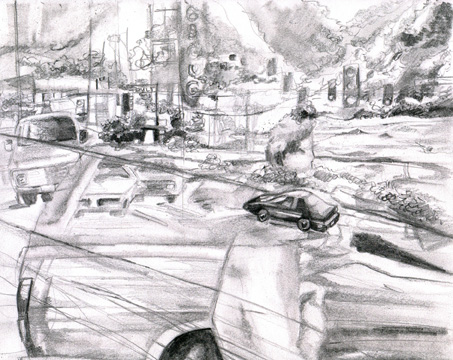
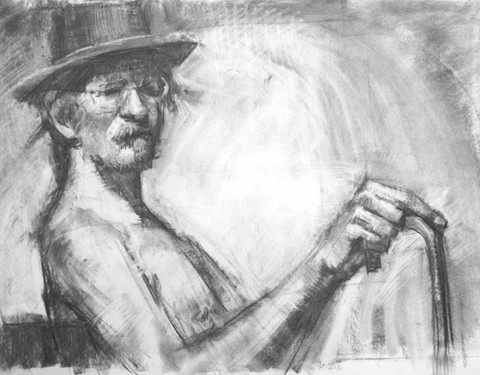
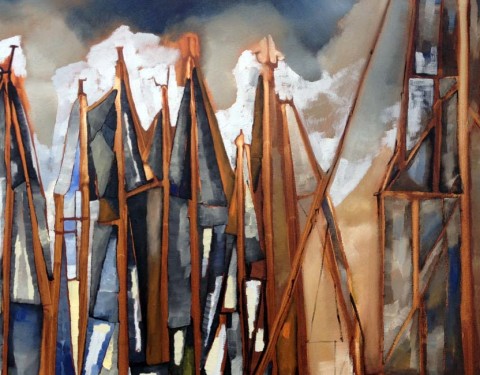
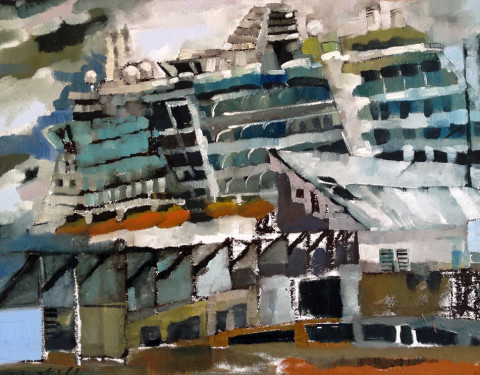





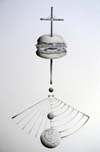


Submit a Comment